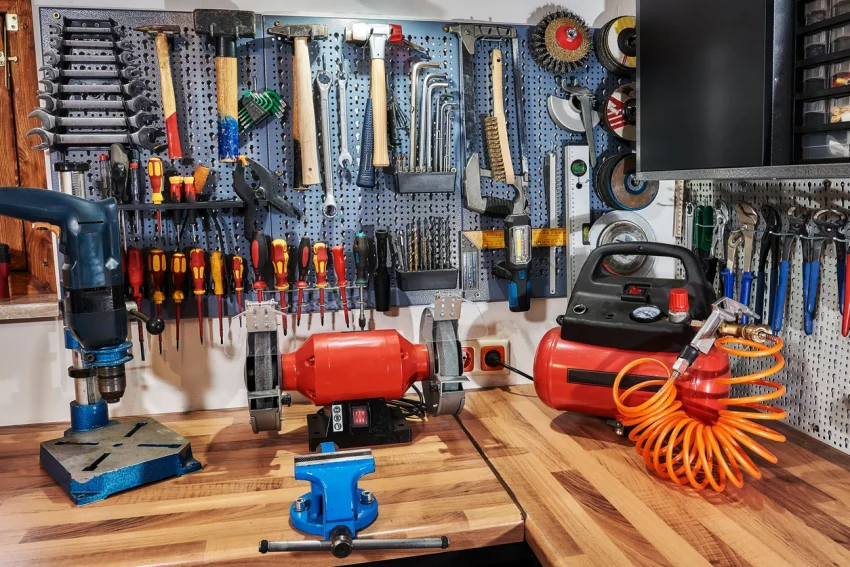A clutter-free, well-organized home is not just aesthetically pleasing but can also significantly improve your quality of life. To achieve this, you need the right home organizing tools and a plan in place. In this comprehensive guide, we will answer key questions about home organization, delve into the various methods, styles, and techniques, and provide insights into organizing tools that can transform your living space. Whether you’re just starting or want to organize your home like a professional, this article has you covered.
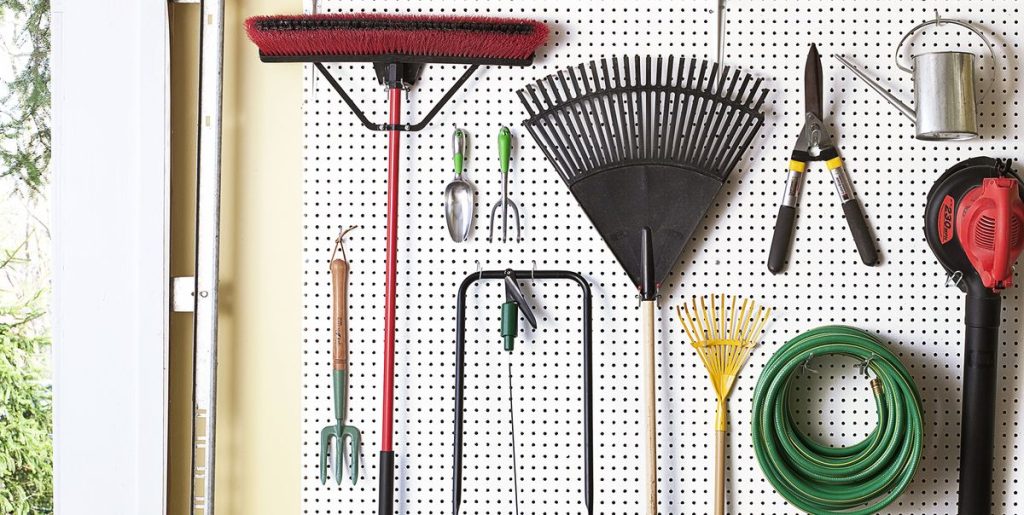
1. Tools for Keeping Yourself Organized:
-
- What tools do you use to keep yourself organized?
- The essential tools for personal organization.
- Digital vs. physical organization tools: Which is right for you?
Home organization starts with personal organization. Without effective personal organization tools, managing your living space can be a daunting task. Let’s explore some of the tools that can help you maintain order in your life.
What tools do you use to keep yourself organized?
To achieve an organized home, you must first organize your life. Personal organization tools can help you manage your time, tasks, and priorities. Here are some essential tools to consider:
- Calendar and Planner: A traditional paper planner or a digital calendar app can help you schedule appointments, set reminders, and track important dates.
- To-Do Lists: Simple to-do lists can be powerful tools for keeping track of daily tasks and goals. Many digital apps are available for this purpose.
- Note-Taking Apps: Whether you prefer pen and paper or digital notes, having a place to jot down ideas and important information is essential.
- Time Management Tools: Apps like Trello, Asana, or Todoist can help you manage your tasks, projects, and deadlines.
- Digital Storage Solutions: Cloud storage services like Google Drive or Dropbox help you keep important documents and files organized and easily accessible.
The essential tools for personal organization:
When it comes to personal organization, different tools work for different people. It’s important to find tools that align with your preferences and lifestyle. The key is to use these tools consistently to stay organized and on top of your responsibilities.
Digital vs. physical organization tools: Which is right for you?
The debate between digital and physical tools is ongoing. While some people thrive in the digital world, others prefer the tactile nature of physical tools. Ultimately, the choice between digital and physical organization tools depends on your personal preferences and what works best for you.
In the next section, we’ll explore how to get started with home organization and create a plan tailored to your needs.
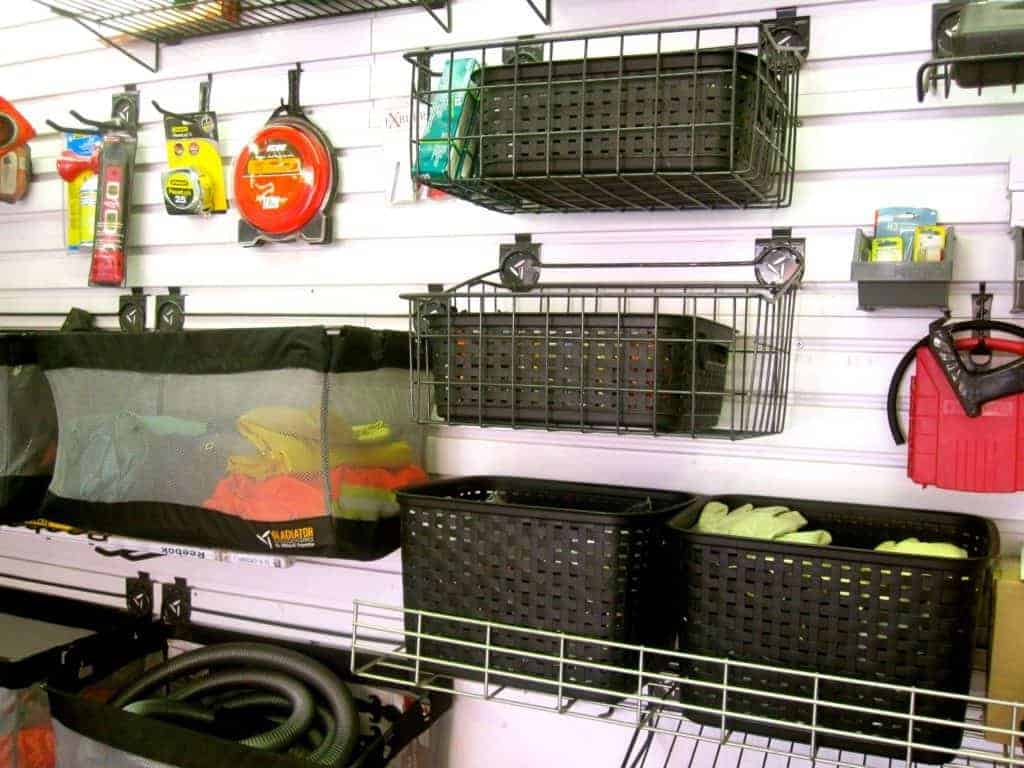
2. Getting Started with Home Organization:
- How do I start organizing my home?
- Creating a home organization plan.
- Tips for decluttering and minimizing.
Starting the journey to a more organized home can feel overwhelming, but with the right approach, it becomes manageable and even enjoyable. In this section, we’ll guide you through the initial steps to get your home organized.
How do I start organizing my home?
Before diving into the physical act of organizing, it’s essential to have a plan in place. Here are some steps to help you get started:
- Set Clear Goals: Define what you want to achieve with your home organization. Is it decluttering, creating more space, or enhancing functionality?
- Assess Your Space: Take a critical look at your home and identify problem areas. Determine what’s working and what isn’t.
- Prioritize: Decide which rooms or areas you want to tackle first. It’s often best to start small and build your organization skills gradually.
- Create a Timeline: Establish a realistic timeline for your home organization project. This will help you stay on track and avoid feeling overwhelmed.
Creating a home organization plan:
A well-structured plan is the cornerstone of successful home organization. Consider these elements when crafting your plan:
- Room-by-Room Approach: Break down your plan by room or area. Each space may require a unique organization strategy.
- Storage Solutions: Identify the types of storage solutions you’ll need for each room. This could include shelves, bins, hooks, or cabinets.
- Decluttering Strategy: Decide how you’ll handle items you no longer need. Will you donate, recycle, or discard them?
- Maintenance: Include a plan for maintaining your organized spaces over time. Regular upkeep is crucial to prevent clutter from accumulating again.
Tips for decluttering and minimizing:
Decluttering is a critical part of home organization. Here are some practical tips to make the process easier:
- The Four-Box Method: Label four boxes as “Keep,” “Donate/Sell,” “Trash,” and “Store.” Use these to sort items in each room.
- One-In, One-Out Rule: For every new item you bring into your home, consider removing an old item. This prevents excess accumulation.
- The KonMari Method: Made famous by Marie Kondo, this method encourages you to keep only items that “spark joy.”
- Small Steps: If you find the process overwhelming, tackle one small area or category at a time.
With a well-structured plan, you’ll be well-prepared to embark on your home organization journey. The next section of our guide will delve into professional-level strategies for organizing your home.
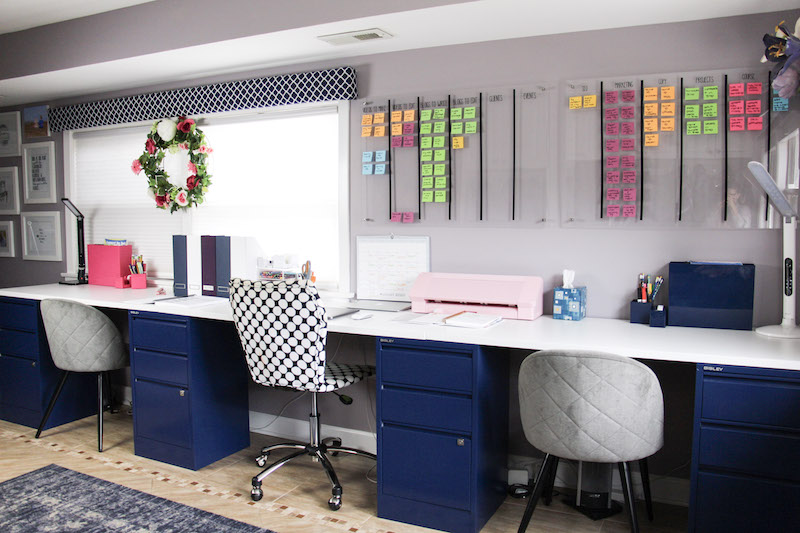
3. Organizing Like a Professional:
- How do I organize my home like a professional?
- The secrets of professional organizers.
- Room-by-room organization tips.
Professional organizers have mastered the art of creating functional, clutter-free spaces. In this section, we’ll explore their secrets and provide room-by-room organization tips to help you elevate your home’s organization to a professional level.
How do I organize my home like a professional?
To organize your home like a pro, consider these principles:
- Declutter First: Professional organizers always start by decluttering. They help you let go of items you no longer need or use.
- Maximize Storage: Make the most of your available storage space. This may involve using underutilized areas like the back of doors or the space under the bed.
- Establish Systems: Create organized systems that are easy to maintain. Labeling, color-coding, and categorization are key components.
- Regular Maintenance: Professionals stress the importance of regular maintenance. Allocate time for periodic check-ins and decluttering sessions.
The secrets of professional organizers:
What sets professional organizers apart? Here are some of their secrets:
- Custom Solutions: They design organization systems tailored to your specific needs and lifestyle.
- Mindful Consumption: Professionals encourage you to be mindful about what you bring into your home, reducing the need for excessive organizing.
- Focus on Functionality: Their goal is to create spaces that not only look organized but also function effectively for your daily life.
Room-by-room organization tips:
Each room in your home may require different organization strategies. Here are some room-specific tips:
- Kitchen: Use drawer dividers and pull-out shelves for utensils and pots. Keep countertops clear for food prep.
- Bedroom: Employ under-bed storage for linens or seasonal clothing. Use closet organizers for shoes and accessories.
- Bathroom: Install floating shelves or cabinet organizers for toiletries. Regularly check for expired products.
- Living Room: Use media cabinets for electronics and entertainment accessories. Incorporate hidden storage within furniture.
- Home Office: Organize cables and wires with cable management solutions. Create a filing system for paperwork.
By adopting the techniques and strategies used by professional organizers, you can transform your home into a clutter-free and functional oasis. In the next section, we’ll explore the different methods of organizing tools, providing you with a comprehensive toolbox for maintaining an organized space.
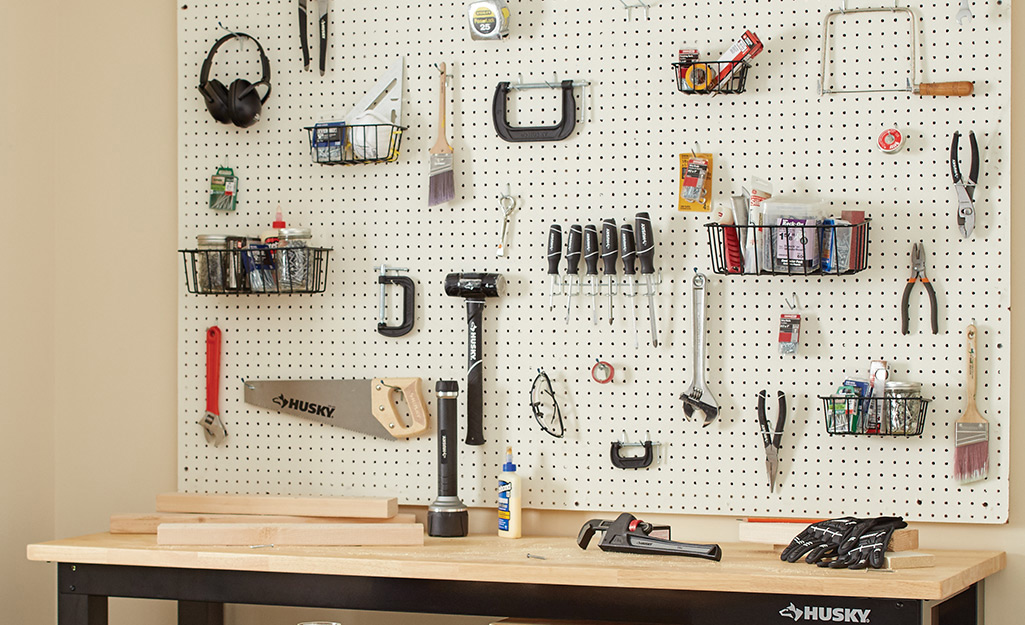
4. Methods of Organizing Tools:
- Exploring the three primary methods in organizing tools.
- Categorization, decluttering, and storage strategies.
In the realm of home organization, it’s essential to understand the various methods and strategies for using organizing tools effectively. In this section, we’ll explore the three primary methods of organizing tools and delve into categorization, decluttering, and storage strategies.
Exploring the three primary methods in organizing tools:
Organizing tools can be classified into three primary methods:
- Categorization: This method involves sorting items into categories based on their type or use. It simplifies the process of finding what you need. For example, you might categorize kitchen items into sections for cookware, utensils, and bakeware.
- Decluttering: Before you can effectively organize, you need to declutter. This method involves the systematic removal of items that are no longer needed. You can use decluttering tools like the “Four-Box Method” mentioned earlier.
- Storage Strategies: Once you’ve categorized and decluttered, you’ll need storage solutions to keep items in their designated places. Storage strategies include shelving units, storage bins, and furniture with built-in storage.
Categorization:
Categorization simplifies your organization process by creating a clear structure. Here are some tips for effective categorization:
- Use Labels: Label containers and shelves to identify the contents of each category.
- Prioritize: Decide which categories are most important to you and your daily routine.
- Regular Review: Periodically review your categories to ensure they still make sense.
Decluttering:
Decluttering is the foundation of home organization. Here are some tips for successful decluttering:
- Start Small: Begin with a single area or category to avoid feeling overwhelmed.
- Question Every Item: Ask yourself if each item is essential or holds sentimental value. If not, consider letting it go.
- Donation and Recycling: Set aside items for donation, recycling, or proper disposal.
Storage Strategies:
Effective storage solutions are essential to maintain an organized home. Consider the following storage strategies:
- Shelving Units: Install shelves in key areas of your home, such as the kitchen, living room, and bathroom, to store frequently used items.
- Storage Bins and Baskets: Utilize storage bins and baskets to corral small items and keep them organized.
- Furniture with Built-in Storage: Invest in multi-functional furniture with concealed storage space, like ottomans or bed frames with storage drawers.
By understanding and implementing these organizing methods, you’ll be better equipped to create an organized and functional living space. In the following section, we’ll explore five popular organization methods that can serve as guides for your home organization journey.
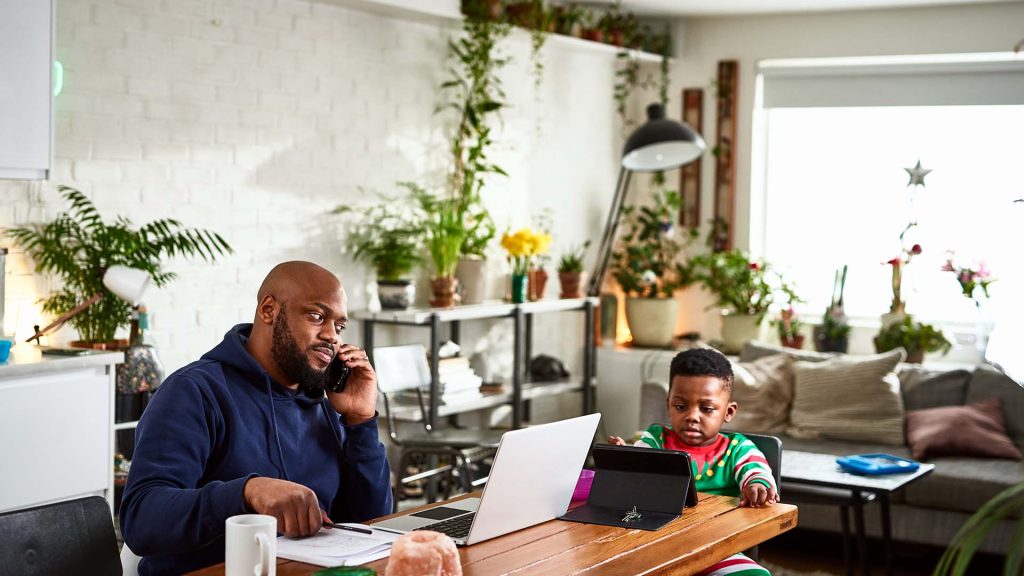
5. Organization Methods You Need to Know:
- What are the five most effective organization methods?
- From the KonMari Method to the 5S System.
There are various organization methods and systems that have gained popularity for their effectiveness in creating well-organized spaces. In this section, we’ll introduce you to five of the most well-known and effective organization methods.
What are the five most effective organization methods?
- The KonMari Method: Developed by Marie Kondo, this method emphasizes keeping items that “spark joy” and decluttering the rest. It encourages you to hold each item and decide whether it truly brings happiness into your life.
- The 5S System: Originating in Japan, the 5S System is a workplace organization methodology that stands for Sort, Set in order, Shine, Standardize, and Sustain. It focuses on creating a clean, efficient, and organized workspace, but its principles can be applied at home as well.
- The FlyLady System: FlyLady stands for “Finally Loving Yourself.” It’s an online-based system that breaks home organization into manageable daily routines and tasks, helping you establish good habits over time.
- The One-Minute Rule: This method is about tackling tasks that take one minute or less as soon as they come to your attention. It prevents small tasks from accumulating and becoming overwhelming.
- The 80/20 Rule (Pareto Principle): The 80/20 rule states that 80% of your results come from 20% of your efforts. Apply this principle by focusing your efforts on the most critical areas of your home, which will yield the most significant organization benefits.
Each of these methods has its unique approach and philosophy. By exploring these options, you can identify the method that best suits your preferences and the specific needs of your home.
In the following section, we’ll dive into the four common organizing styles, helping you identify your personal organizing style and work with it effectively.
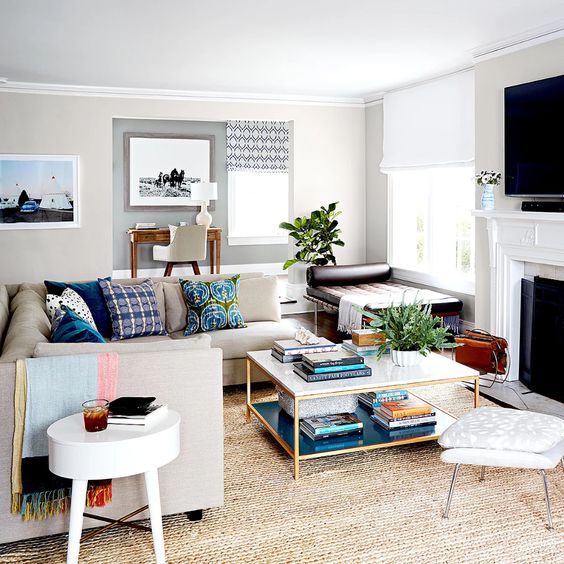
6. Identifying Your Organizing Style:
- What are the four common organizing styles?
- How to find your organizing style and work with it.
Understanding your personal organizing style is crucial for effective home organization. In this section, we’ll explore the four common organizing styles and provide guidance on how to identify your own style and make it work for you.
What are the four common organizing styles?
- The Minimalist: Minimalists prefer a clutter-free, simple living environment. They focus on owning only the essentials and keeping their space clean and uncluttered.
- The Collector: Collectors enjoy having various items and often find sentiment in possessions. They may have a large collection of items that are thoughtfully displayed and organized.
- The Planner: Planners are meticulous and detail-oriented. They excel at creating systems and schedules to maintain an organized home. Everything has its place, and they stick to routines.
- The Creative: Creatives thrive in an environment that allows them to express themselves. They may organize through color-coding, unique displays, and DIY projects that reflect their personality.
How to find your organizing style and work with it:
Identifying your organizing style involves self-reflection and experimentation. Here are steps to help you discover your style:
- Assess Your Personality: Consider your natural tendencies and what makes you feel comfortable in your living space.
- Experiment: Try out different organizing methods and styles to see which one resonates with you the most.
- Learn from Others: Seek inspiration from others with similar organizing styles and incorporate their ideas into your approach.
- Adapt and Personalize: Tailor your organizing style to your unique needs and preferences. Combine elements of different styles that work best for you.
Once you’ve identified your organizing style, you can create an organization plan that aligns with your personality and helps you maintain an organized home that suits your lifestyle.
In the following section, we’ll explore various organizing techniques that can be applied regardless of your style, enhancing your overall organization efforts.

7. Effective Organizing Techniques:
- Understanding various organizing techniques.
- Labeling, color-coding, and the power of checklists.
Organizing techniques are essential for maintaining an organized home. In this section, we’ll explore various techniques that can be applied across different organizing styles. Learn about the benefits of labeling, color-coding, and the effectiveness of checklists in your home organization efforts.
Understanding various organizing techniques:
Effective organization techniques can make a significant difference in your daily life. Here are some key techniques:
- Labeling: Labeling items and containers helps you quickly identify what’s stored inside. It’s especially useful for containers, drawers, and storage boxes.
- Color-Coding: Color-coding is a powerful technique for visually organizing items. Assign specific colors to different categories or types of items. For example, you can use different colors for file folders or storage bins to easily distinguish their contents.
- Checklists: Checklists help you stay on top of tasks and routines. Whether it’s a daily to-do list or a cleaning checklist, it ensures nothing is forgotten.
- Zoning: Zoning involves dividing a space into distinct zones for specific activities or item categories. For example, create a work zone in your home office and a relaxation zone in your living room.
- Vertical Space Utilization: Maximize space by using vertical organization techniques like wall-mounted shelves or hanging storage solutions.
Labeling:
Labeling is a straightforward yet powerful organizing technique. It offers several benefits:
- Quick Identification: Labels enable you to find what you need without rummaging through boxes or containers.
- Prevents Misplacement: It reduces the likelihood of items ending up in the wrong place.
- Streamlined Processes: In the kitchen, for instance, labeled spice jars or pantry items can make cooking and meal planning more efficient.
Color-Coding:
Color-coding adds a visual element to organization. It’s especially useful when you have a lot of items to categorize, such as in your closet, office, or children’s playroom:
- Instant Recognition: When items are color-coded, you can quickly locate what you need.
- Organizes Categories: Assign specific colors to different categories of items. For example, use red for office supplies, green for gardening tools, and blue for cleaning supplies.
- Aesthetic Appeal: Color-coded systems can also enhance the aesthetics of your space.
Checklists:
Checklists are invaluable for task management and staying organized:
- Clear Goals: They provide a clear list of tasks that need to be completed.
- Progress Tracking: You can mark off completed tasks, which provides a sense of accomplishment.
- Prevents Forgetfulness: Checklists ensure that nothing important gets overlooked.
Incorporating these techniques into your home organization strategy can help streamline your daily life and maintain order in your living space. In the next section, we’ll explore common methods of organizing that are widely used in various settings.
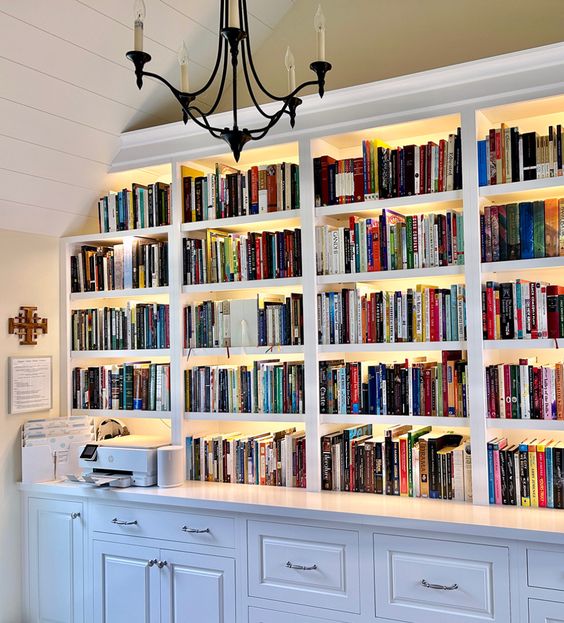
8. Common Methods of Organizing:
- A detailed look at common home organization methods.
- The pros and cons of each approach.
There are several common methods of organizing used in homes worldwide. In this section, we’ll delve into these methods, examining their advantages and potential drawbacks. Understanding these methods will help you choose the one that best suits your needs.
A detailed look at common home organization methods:
- Marie Kondo Method: This method, developed by Marie Kondo, emphasizes keeping only items that “spark joy.” While it’s highly effective for decluttering, some may find it challenging to part with sentimental items.
- 5S Method: Originating in Japanese manufacturing, the 5S Method focuses on Sort, Set in order, Shine, Standardize, and Sustain. It promotes efficiency and organization but may be more suitable for workspaces.
- Room-by-Room Method: Many people prefer organizing one room at a time. This approach allows for a clear focus but can be time-consuming if your home has multiple areas in need of organization.
- Categorization and Labeling: Organizing by category (e.g., clothing, books, or kitchen items) and using labels can lead to a highly organized space. However, it requires consistency and maintenance.
- Decluttering and Minimalism: The goal is to reduce possessions to the essentials, simplifying life and creating more space. It can be challenging for those who have sentimental attachments to items.
The pros and cons of each approach:
- Marie Kondo Method:
- Pros: Effective for decluttering and reevaluating possessions.
- Cons: May be difficult for those who are sentimentally attached to items.
- 5S Method:
- Pros: Enhances efficiency and organization.
- Cons: Primarily designed for workplaces and may not apply to every home situation.
- Room-by-Room Method:
- Pros: Allows for focused organization in each area.
- Cons: Time-consuming when addressing multiple rooms.
- Categorization and Labeling:
- Pros: Effective in maintaining organization.
- Cons: Requires ongoing consistency.
- Decluttering and Minimalism:
- Pros: Creates a simplified and uncluttered living space.
- Cons: Can be challenging for sentimental individuals.
Each of these methods has its unique strengths and may be more suited to specific situations. Consider which method aligns with your goals and personal preferences when organizing your home.
In the following section, we’ll explore the concept of organizing and its types, providing a broader perspective on the principles of organization.

9. Understanding Organizing and Its Types:
- What is organizing and its types?
- Organizing for productivity, aesthetics, and functionality.
Organizing is not a one-size-fits-all concept. It can be tailored to various objectives and styles. In this section, we’ll explore the concept of organizing and its types, including organization for productivity, aesthetics, and functionality.
What is organizing and its types?
Organizing is the process of arranging items and spaces to make them more efficient, visually appealing, and functional. It can be categorized into three main types:
- Organizing for Productivity: This type of organization focuses on improving efficiency and effectiveness. It aims to create streamlined processes and systems that save time and reduce stress. It’s ideal for busy individuals and households with packed schedules.
- Organizing for Aesthetics: Aesthetic organization emphasizes the visual appeal of a space. It involves arranging items and decor to create a harmonious and visually pleasing environment. It’s perfect for those who appreciate a beautiful living space.
- Organizing for Functionality: Functional organization prioritizes the practicality of a space. It’s about ensuring that everything has a purpose and is easily accessible. This type of organization is crucial for households with specific needs, like families with children or people with disabilities.
Organizing for Productivity:
- Time Management: Organizing your schedule and tasks to maximize productivity.
- Task Prioritization: Focusing on high-priority tasks and responsibilities.
- Workspace Efficiency: Optimizing your work environment to enhance productivity.
Organizing for Aesthetics:
- Interior Design: Creating a visually pleasing and coordinated interior design.
- Decor Arrangement: Arranging decor items to enhance the room’s visual appeal.
- Color and Style Coordination: Coordinating colors and styles for a cohesive look.
Organizing for Functionality:
- Storage Solutions: Implementing storage systems to keep items easily accessible.
- Accessibility: Ensuring that items and spaces are user-friendly and accessible for all.
- Safety and Ease of Use: Organizing to reduce potential hazards and create a functional living space.
Understanding these types of organization can help you identify your primary goals and priorities when organizing your home. In the next section, we’ll explore the basics of organizing, providing fundamental principles to guide your organization journey.

10. The Basics of Organizing:
- What is the basic of organizing?
- Five fundamental principles for successful home organization.
Before diving into the intricate details of home organization, it’s essential to grasp the fundamental principles that underlie successful organization. In this section, we’ll explore the basics of organizing and provide you with five key principles to guide your organization efforts.
What is the basic of organizing?
At its core, organizing is about creating order and harmony in your living space. It involves the systematic arrangement of items, spaces, and processes to achieve specific goals, whether they’re related to productivity, aesthetics, functionality, or a combination of these.
Five fundamental principles for successful home organization:
- Simplicity: Keep it simple. Start with a clear plan, and don’t overcomplicate your organization strategies. The simpler the system, the easier it is to maintain.
- Consistency: Consistency is key to maintaining an organized space. Develop routines and habits that support your organization goals. Regularly review and maintain your organized areas to prevent clutter from returning.
- Flexibility: Be adaptable in your organization approach. Life changes, and so do your needs. Your organization systems should evolve with you. Don’t be afraid to adjust and refine your methods as necessary.
- Prioritization: Prioritize what’s most important to you. Not every area or category requires the same level of organization. Focus your efforts on the spaces and items that matter most.
- Balance: Strive for a balance between productivity, aesthetics, and functionality. While one may be more prominent based on your goals, a well-balanced approach ensures a harmonious living space.
Understanding and applying these fundamental principles can help you create and maintain an organized home that aligns with your goals and lifestyle. In the next section, we’ll explore the simple organizing process to help you get started on your organization journey.

11. The Simple Organizing Process:
- What is the basic organizing process?
- A step-by-step guide to simplifying the organization process.
The organizing process can feel daunting, but it can be simplified by following a structured approach. In this section, we’ll break down the basic organizing process into a step-by-step guide, making it easier for you to start and maintain your organization journey.
What is the basic organizing process?
The basic organizing process involves several key steps that, when followed consistently, lead to an organized and harmonious living space. It’s a cyclical process that includes decluttering, categorizing, storing, and maintaining order.
A step-by-step guide to simplifying the organization process:
- Decluttering: Begin by decluttering the area or category you wish to organize. This involves going through items and deciding what to keep, donate, recycle, or discard. Use the “Four-Box Method” mentioned earlier to help with this process.
- Categorization: Once you’ve decluttered, categorize the items that remain. This can involve sorting them into groups based on type, function, or any relevant criteria.
- Storage Solutions: Determine the most suitable storage solutions for your categorized items. This may involve shelving, storage bins, cabinets, or other organization tools.
- Labeling and Identification: To maintain organization, label or identify containers, shelves, and items. This simplifies the process of finding and returning items to their designated places.
- Maintenance and Routine: Regularly revisit the organized area to ensure it remains clutter-free and organized. Set a schedule for maintenance tasks, such as weekly tidying or monthly decluttering sessions.
- Adapt and Adjust: As your needs and lifestyle change, be prepared to adapt and adjust your organization systems. Flexibility is key to maintaining an organized space over time.
- Celebrate Your Success: Don’t forget to acknowledge and celebrate your successes. A well-organized space can be a source of pride and satisfaction.
By following this step-by-step guide, you can simplify the organizing process and gradually work towards creating a well-organized and clutter-free home. Whether you’re organizing for productivity, aesthetics, functionality, or a combination of these, this process can be tailored to meet your specific goals.
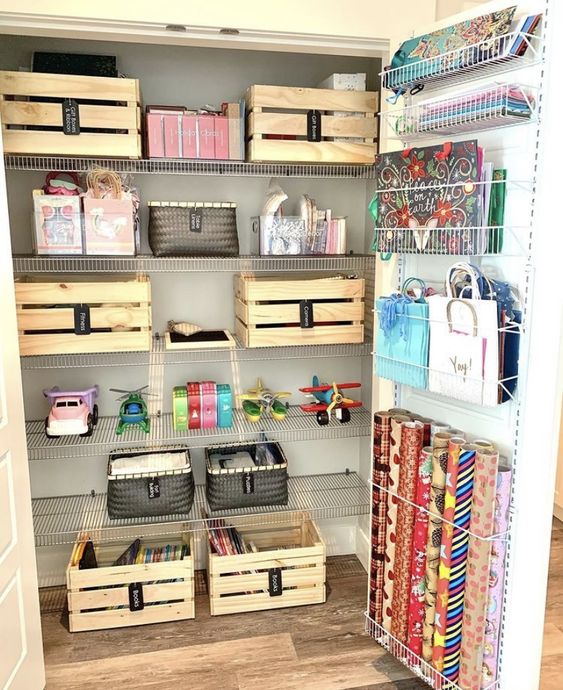
12. Wrapping Up: Achieving Organization Simplified:
- Recap of key points.
- Final thoughts on achieving a well-organized home.
As we near the end of this comprehensive guide to home organizing, let’s take a moment to recap the key points covered in this article and provide some final thoughts on achieving a well-organized home.
Recap of key points:
- Home organization starts with personal organization. Use tools like calendars, to-do lists, and digital apps to manage your time and tasks effectively.
- Getting started with home organization requires a clear plan. Set goals, assess your space, prioritize areas, and create a timeline.
- Organizing like a professional involves decluttering, maximizing storage, and establishing systems for each room.
- There are three primary methods of organizing tools: categorization, decluttering, and storage strategies.
- Five popular organization methods include the KonMari Method, the 5S System, the FlyLady System, the One-Minute Rule, and the 80/20 Rule (Pareto Principle).
- Understanding your organizing style is key to making organization work for you. Identify whether you’re a minimalist, collector, planner, or creative.
- Effective organizing techniques like labeling, color-coding, and checklists can streamline the organization process.
- Common organization methods include the Marie Kondo Method, the 5S Method, room-by-room organization, categorization, and decluttering and minimalism.
- Organizing can be tailored for productivity, aesthetics, functionality, or a combination of these.
- The fundamental principles of organization include simplicity, consistency, flexibility, prioritization, and balance.
- The basic organizing process involves decluttering, categorization, storage solutions, labeling, maintenance, and adaptation.

Final thoughts on achieving a well-organized home:
Achieving and maintaining a well-organized home is an ongoing journey that requires dedication, adaptability, and a clear understanding of your goals. Whether you’re striving for a clutter-free and harmonious living space, increased productivity, or enhanced aesthetics, the principles and methods covered in this guide can serve as valuable tools to help you reach your objectives.
Remember that organization is not a one-size-fits-all concept, and your approach should align with your unique preferences and needs. With the right tools, strategies, and mindset, you can simplify the organization process and transform your home into a space that supports your lifestyle and aspirations.
We hope this guide has provided you with valuable insights and practical advice for your home organization journey. As you embark on this path to organization, remember that each step you take brings you closer to the benefits of an organized, harmonious, and enjoyable living space.
Thank you for reading, and we wish you every success in your quest for a well-organized home.
